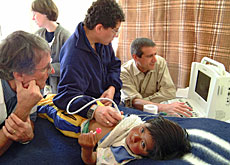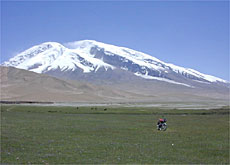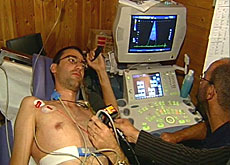Scientists pinpoint cause of altitude sickness

Two Swiss researchers claim to have discovered what causes a potentially deadly condition that often strikes mountaineers.
Urs Scherrer and Claudio Sartori say studies they have carried out show that High Altitude Pulmonary Edema (HAPE) is triggered by the lungs’ inability to transport sodium adequately.
HAPE can occur when climbers ascend a mountain too quickly. Fluid builds up in the lungs, causing shortness of breath and extreme tiredness. Unconsciousness or even death can result.
According to the researchers from Lausanne University Hospital, a faulty gene is the probable cause of the condition, which can strike at altitudes of 3,000 metres and above.
The researchers made their discovery during a study in the Alps. Fifty climbers spent 48 hours in the Monte Rosa mountain range at a height of 4,556 metres. Of the 50 mountaineers, 21 had previously suffered from a pulmonary edema, while 29 had not.
Scherrer and Sartori later compared the two groups of climbers and found that the climbers susceptible to the condition suffered from an inability of the lungs to transport sodium normally.
As a result blood pressure increased in the vessels leading to the lungs, causing fluid retention.
Underestimated risk
The scientists said the risk of developing HAPE was often underestimated, and that even those in good health could fall victim to the condition.
“When a group of people ascend the Monte Rosa too quickly, around ten per cent will develop HAPE within 36 to 72 hours of reaching the peak,” Scherrer said, in comments reported by the Swiss National Science Foundation.
The findings explain why the drug salmeterol has proved to be successful in treating the symptoms of HAPE. Salmeterol works by stimulating the transport of sodium in the lungs.
The researchers now hope to extend their research to examine the long-term effects of high altitude on the human body by studying the Aymara Indians in Bolivia.
They are also keen to discover why it is that inhabitants of La Paz – situated at 3,600 metres – sometimes develop a pulmonary edema after spending a short time at low altitude.
Previous studies have suggested that HAPE is caused by an inflammation of the small blood vessels of the lungs.
swissinfo with agencies
High altitude sickness usually strikes at 3,000 metres and above.
Researchers now believe the condition has a genetic cause.
Symptoms – including breathlessness and tiredness – usually improve quickly on descent, but death can result.
Mountaineers are advised to make gradual ascents.

In compliance with the JTI standards
More: SWI swissinfo.ch certified by the Journalism Trust Initiative


You can find an overview of ongoing debates with our journalists here. Please join us!
If you want to start a conversation about a topic raised in this article or want to report factual errors, email us at english@swissinfo.ch.